1. Bread Pudding
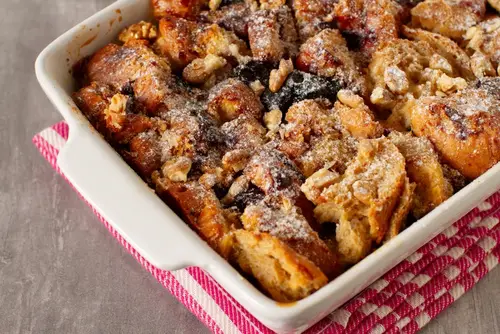
Bread pudding was born out of thrift and survived because of love. It started as a way to use up stale bread, baked with milk, eggs, sugar, and spices. Grandparents kept making it because it turned waste into warmth — a dessert that felt like a hug. They didn’t care about presentation; they cared that it made the house smell like cinnamon and comfort.
Even with modern desserts taking over, bread pudding endures at family gatherings and diners alike. It speaks to an era when “making do” was an art form. Variations exist all over the country, but older cooks rarely deviate from their handwritten versions. Every bite carries the taste of simpler times.
2. Ambrosia Salad
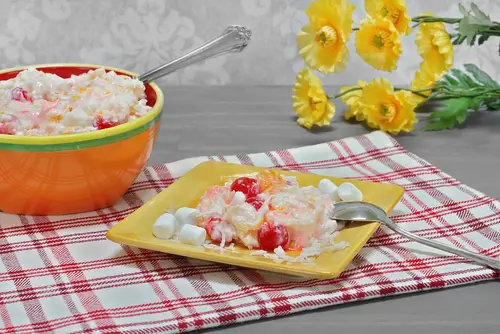
Ambrosia salad is one of those retro “desserts” that makes younger generations do a double take. It’s a mix of canned fruit cocktail, marshmallows, shredded coconut, and whipped topping — a sugar rush straight out of the 1950s church potluck. The dish likely stuck around because Southern grandmothers kept serving it at holidays, calling it “tradition.” The combination might feel outdated now, but for many families, it’s nostalgia in a bowl.
Part of its staying power comes from how easy it is to make and how adaptable it became in mid-century America. When canned fruit became widely available after World War II, homemakers prized recipes that were quick, colorful, and didn’t require baking. Ambrosia salad checked all the boxes, even if modern palates lean toward fresher ingredients. Grandparents just couldn’t let go of something that felt so tied to celebration.
3. Tomato Aspic
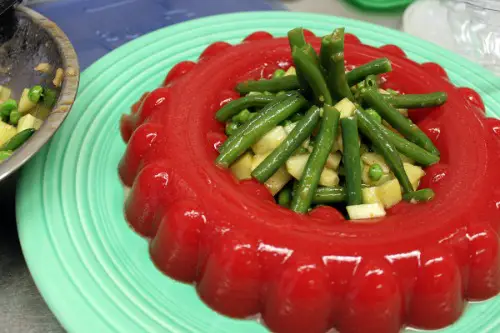
Tomato aspic might be the most polarizing holdout from the mid-century cookbook era. It’s essentially savory Jell-O made with tomato juice, vinegar, and spices — often molded into elaborate shapes. It sounds bizarre today, but back then, gelatin molds were a sign of culinary sophistication. Many grandmothers refused to let it go, seeing it as the height of dinner party elegance.
Its roots actually go back to the early 20th century when refrigeration was rare and gelatin was a sign of modern kitchen prowess. The bright red ring of wobbling tomato aspic became a holiday staple, often served with a dollop of mayonnaise. Grandparents kept it alive because it reminded them of when cooking was a performance, not just a task. Even if no one under 60 asks for seconds, it’s a piece of edible nostalgia.
4. Chicken à la King

Chicken à la King was once the ultimate “fancy” dish for family gatherings and Sunday dinners. It’s diced chicken in a creamy sauce with mushrooms and pimentos, usually served over toast points or rice. Though it fell out of fashion in the late 20th century, many grandparents clung to it as a comforting reminder of their postwar youth. It represented elegance without extravagance — a dish you could make from leftovers and still impress guests.
What really saved it from extinction is how adaptable it was for home cooks. Canned chicken and condensed soup versions filled countless community cookbooks in the 1950s and ’60s. Even when restaurants stopped serving it, it lived on in handwritten recipe cards and family gatherings. Grandparents loved that it made them feel like they were serving something “special,” even if it came from a can.
5. Green Bean Casserole
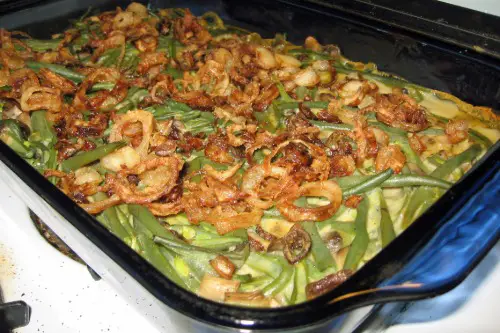
This classic dish was invented in 1955 by a Campbell’s Soup test kitchen manager, Dorcas Reilly, and it refuses to die. The combination of canned green beans, cream of mushroom soup, and fried onions became a Thanksgiving must-have. Grandparents kept making it exactly as written, never swapping out canned ingredients for fresh ones. To them, the magic was in its simplicity — and its predictability.
The recipe became a symbol of convenience and consistency in postwar America. While younger cooks might prefer roasted or fresh green beans, older generations see no reason to change something that’s been on the table for decades. It’s more than a side dish — it’s a family heirloom in casserole form. The crunchy onion topping is non-negotiable.
6. Jell-O Salad
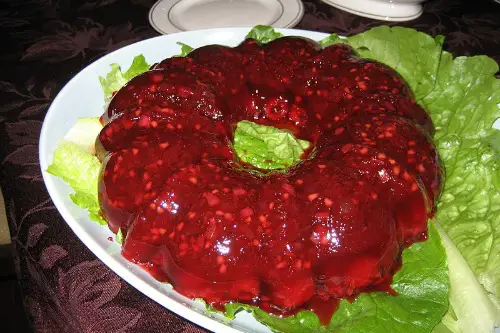
No list of old-school American recipes is complete without Jell-O salad. These wobbly creations were once the centerpiece of every potluck table, often layered with fruit, nuts, cottage cheese, or even shredded carrots. To younger eyes, they look like science projects, but to grandparents, they’re pure Americana. It’s part dessert, part nostalgia trip.
Jell-O salads were popular because they were colorful, affordable, and could be made ahead of time. They signified progress — a fun use of the newly popularized gelatin mixes that revolutionized home cooking in the 1930s and ’40s. Even after trends moved on, grandmothers kept them alive for holiday buffets and family reunions. To them, it’s not weird; it’s tradition in technicolor.
7. Liver and Onions
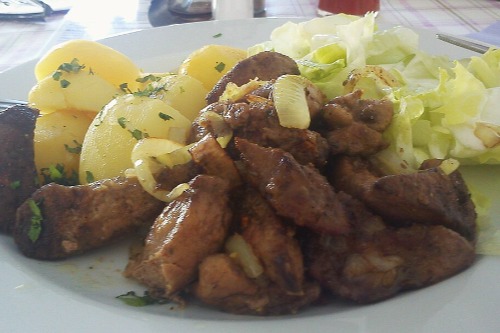
For many Baby Boomers, liver and onions was a weekly dinner — not a treat, but a necessity. Grandparents swore by it as a “superfood” before that term existed, praising its iron and vitamins. They developed a taste for it out of frugality, since liver was inexpensive and widely available. Over time, it became less about cost and more about loyalty to an old-fashioned staple.
Even as younger generations recoil from the strong flavor, many older cooks still fry it up in cast-iron skillets. They insist no one today understands “real food” like they did. Liver and onions survived because it carries the memory of postwar home economics classes and family dinners around the Formica table. For grandparents, it’s not a relic — it’s good eating.
8. Waldorf Salad
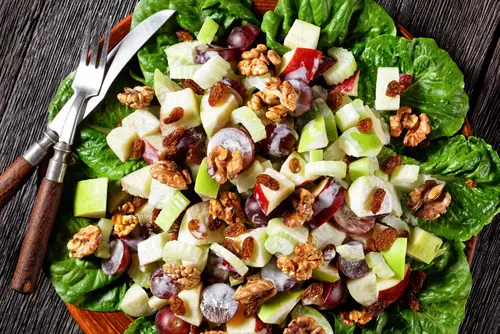
Created at New York’s Waldorf Hotel in the 1890s, this apple, celery, and walnut salad somehow ended up a household classic. By the mid-20th century, it was a staple on American holiday tables, especially when made with mayonnaise instead of yogurt. Grandparents refused to modernize it because they viewed it as timeless and elegant. For them, it wasn’t just a salad — it was a little piece of high society brought home.
The charm lies in its simplicity, and older cooks never saw the need to dress it up. When celebrity chefs started offering updated versions, many rolled their eyes and stuck to the basics. It remains a symbol of hospitality from a time when “fancy” meant something humble yet special. The crunch of the apples still sounds like Sunday supper in the 1950s.
9. Creamed Chipped Beef on Toast
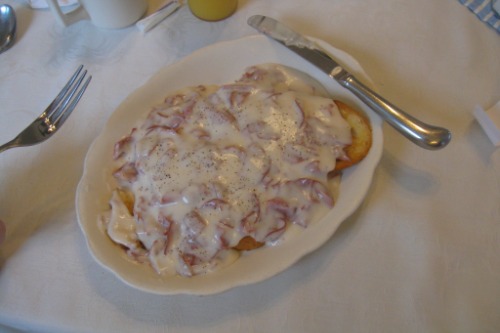
Also known as “SOS” (a military nickname best left unexplained in polite company), this dish was born in mess halls and survived in home kitchens. It’s just dried beef in a white gravy poured over toast, but for Depression-era and wartime generations, it was hearty and cheap. Grandparents kept making it long after rationing ended because it reminded them of resilience. They saw it as comfort food with a story behind it.
The recipe persisted because it was easy to make from pantry staples — milk, flour, butter, and jarred beef. It showed up in postwar cookbooks and eventually became a breakfast favorite in diners. Younger generations may laugh at it, but to older ones, it’s a taste of endurance and thrift. You could say it survived on sentiment as much as flavor.
10. Fruitcake

Few desserts are as divisive — or as immortal — as fruitcake. Packed with candied fruit, nuts, and sometimes soaked in rum, it’s been part of American holidays since colonial times. Grandparents never stopped making it because, to them, it represented care and craftsmanship. The long shelf life didn’t hurt either.
Even as jokes about fruitcake piled up, they kept defending it fiercely. Many have family recipes handed down through generations, sometimes dating back to the Old Country. For them, fruitcake isn’t outdated; it’s sacred. Every slice is a reminder that patience and tradition still matter.
11. Corn Pudding

Corn pudding is a humble dish that never quite left the Southern table. It’s a creamy baked blend of corn, eggs, milk, and sugar — half side dish, half dessert. Grandparents clung to it because it bridges the gap between savory and sweet like nothing else. It’s one of those recipes that never needed updating because it was already perfect in its simplicity.
The dish dates back to colonial America and became especially beloved in the rural South. It showed up at every church supper and family reunion, always baked in a heavy Pyrex dish. While modern cooks might add spices or cheese, grandparents tend to stick to the original. To them, corn pudding isn’t old-fashioned — it’s home.
12. Deviled Eggs
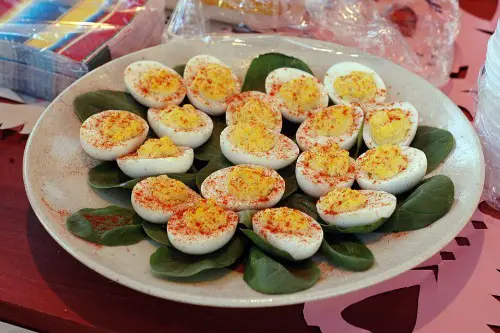
Deviled eggs never went out of style entirely, but their classic version — mustard, mayo, paprika, and not much else — survived because grandparents never saw a reason to mess with it. They’re a picnic and holiday staple that traces back to ancient Rome, but they became distinctly American in the mid-20th century. Grandparents perfected them to a science, right down to the sprinkling of paprika for color. Every tray is a little time capsule.
The reason they refused to “update” deviled eggs is simple: they already work. No bacon crumbles or sriracha needed — just creamy, tangy filling done right. They represent the kind of no-nonsense, crowd-pleasing cooking older generations value. Every family has a designated “egg master,” and it’s almost always someone’s grandma.
13. Meatloaf

Meatloaf has survived for over a century not because it’s trendy, but because it’s comforting and thrifty. It dates back to the Great Depression when families needed to stretch a pound of meat into several meals. Older generations saw it as a way to waste nothing — breadcrumbs, ketchup, and even oatmeal were used to bulk it up. For grandparents who lived through lean times, it wasn’t just dinner; it was a symbol of resourcefulness.
Even as dining habits changed, they refused to modernize it with fancy glazes or gourmet meats. To them, meatloaf is supposed to be homely, not haute cuisine. They’ll still bake it in the same dented pan they’ve had for decades, serving it with mashed potatoes and peas. That kind of stubborn simplicity has kept it on American tables far longer than anyone expected.
14. Sloppy Joes
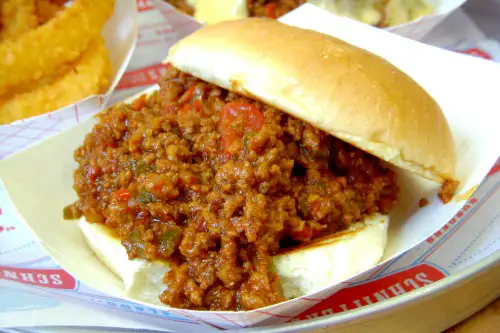
The Sloppy Joe became a staple in the 1950s thanks to school cafeterias and busy home cooks. It’s just ground beef in a tangy tomato-based sauce, spooned onto a hamburger bun — messy but beloved. Grandparents never stopped making it because it reminded them of feeding big families on a budget. It’s kid-friendly, easy, and nostalgic all at once.
While modern chefs have tried to reinvent it, the original version still reigns supreme at family cookouts. It’s one of those recipes that thrives on imperfection — the drippier, the better. Grandparents appreciate that it’s simple and hearty, not gourmet. For them, a meal that makes a mess is a meal worth remembering.
15. Tuna Noodle Casserole
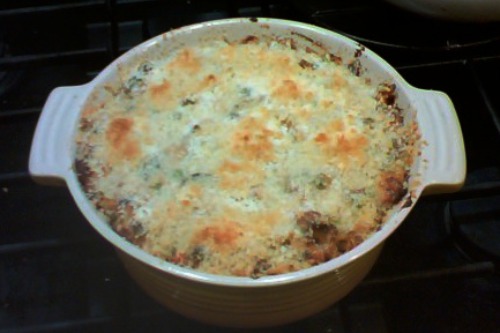
Tuna noodle casserole was the weeknight hero of the 1950s housewife. With canned tuna, cream of mushroom soup, and egg noodles, it became the definition of convenience cooking. Grandparents refused to “update” it because it symbolized practicality and care rolled into one dish. It’s the kind of meal that said, “We’re doing our best,” and somehow that was enough.
It’s been called outdated, but it never quite disappeared from family menus. Maybe it’s the crispy breadcrumb topping or the comforting creaminess — or maybe it’s the memory of coming home to something warm on the table. Grandparents kept it alive because it was dependable and familiar. Like them, it’s steady, simple, and still here.
This post 15 American Recipes That Survived Only Because Grandparents Refused to Update Them was first published on American Charm.


